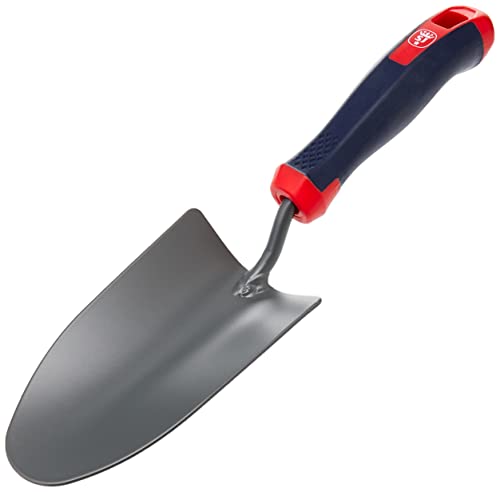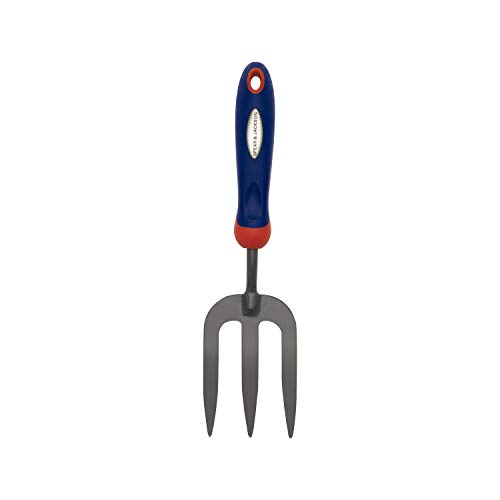How do I know when my carrots are ready to harvest? Key signs that indicate when to pick
Experts share what to look out for when harvesting carrots, so you can enjoy them at their best

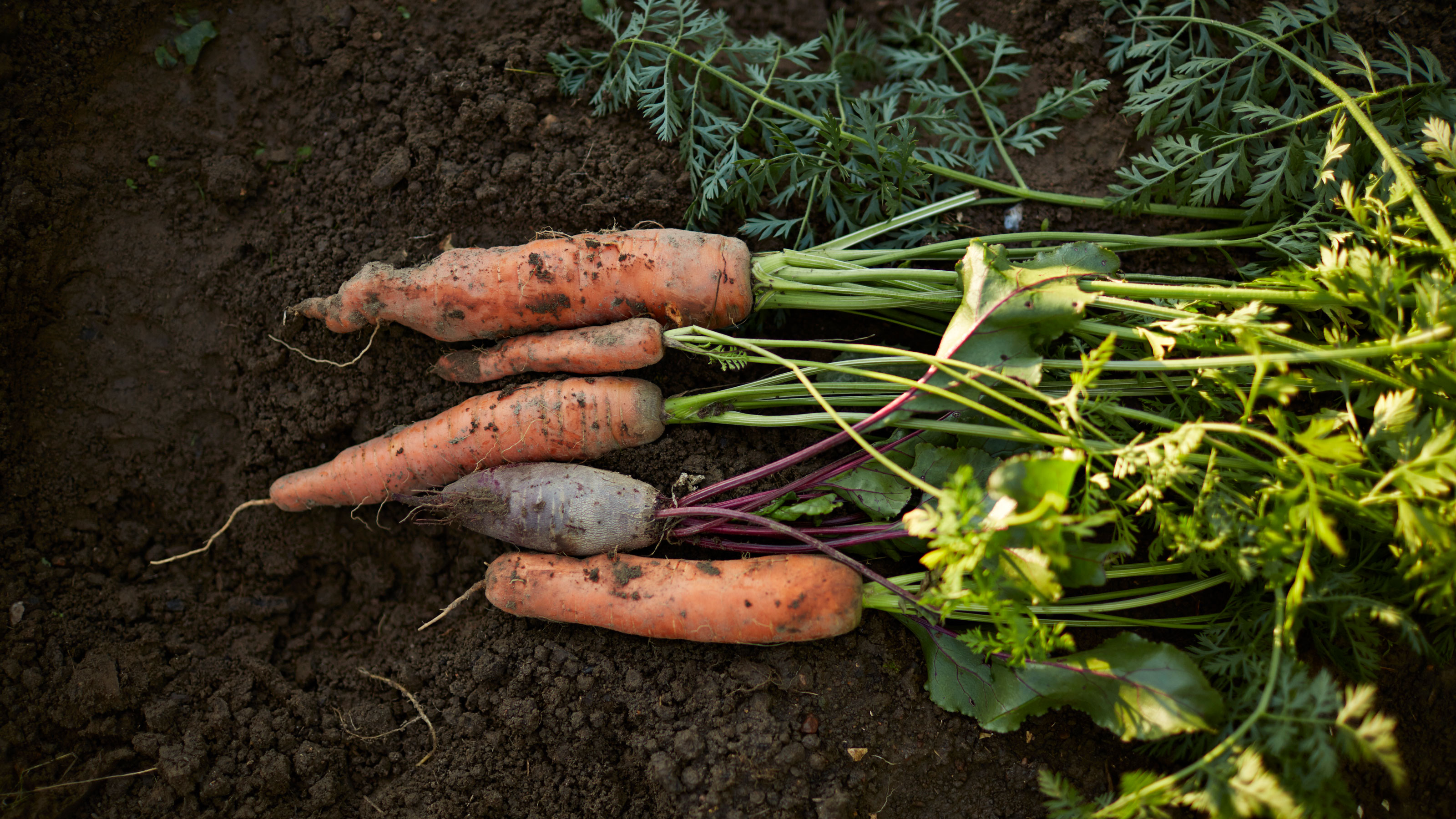
Whether they're bulking out a hearty casserole or flavouring a delicious carrot cake, carrots are an absolute staple in the kitchen. Growing your own can provide a heartiful bounty to see you through the winter, but it also leads you to the question - how do I know when my carrots are ready to harvest?
Getting the timing right when harvesting any home-grown vegetables is vital, and this is especially true when it comes to carrots. Pick them too early and they won't have much flavour. Pick them too late and they'll have a woody, bitter taste.
But pick them at the right time and they'll serve you with the perfect sweet crunch. And though knowing when to plant carrots for a healthy harvest is critical, arguably even more important is knowing exactly when to pick them.
'Unlike tomatoes or squash, you can't tell if a carrot is ripe just by looking above ground,' says Loren Taylor, Gardening and Landscaping Expert, Outdoor Fountain Pros. 'So how do you know when those tasty orange roots are at their peak for harvesting?'
We asked gardening and growing experts the question - how do I know when my carrots are ready to harvest - and they told us what we should be looking out for to enjoy this staple root vegetable at its best.
How do I know when my carrots are ready to harvest?
Just like knowing how to sow seeds successfully, harvesting carrots at the right time is crucial for being able to enjoy them at their best. Here are some key indicators the experts pointed out when we asked them how do I know when my carrots are ready to be harvested.

Victoria Cummins, a Senior Editor at PlantWhisperer and a gardening expert, specializes in permaculture. Her work focuses on building soil quality, cultivating fruit trees, and wild harvesting. Collaborating with homeowners, landowners, farmers, gardeners, and communities, she dedicates her expertise to healing landscapes and enhancing food production to create resilient, sustainable environments.
1. Time from planting
Just like with harvesting rhubarb (or anything else that we've grown ourselves), the timing of when to pick is majorly influenced by when the first seeds were sown. That's why it's helpful to make a mental or physical note when you start growing carrots in pots or vegetable beds.
Sign up to our newsletter for style inspiration, real homes, project and garden advice and shopping know-how
'In my container gardens, I've found that carrots typically take 60 to 80 days to mature,' says Victoria Cummins, Senior Editor, PlantWhisperer. 'If you're growing baby carrots in planters, you might be able to harvest them as early as 50 to 60 days. For full-sized carrots in larger pots, it's usually best to wait 75 to 80 days.'
Use this as a helpful indicator to know when your carrots are nearing harvest time, but don't take it as a magic rule; there are other key factors that influence when you should pick.
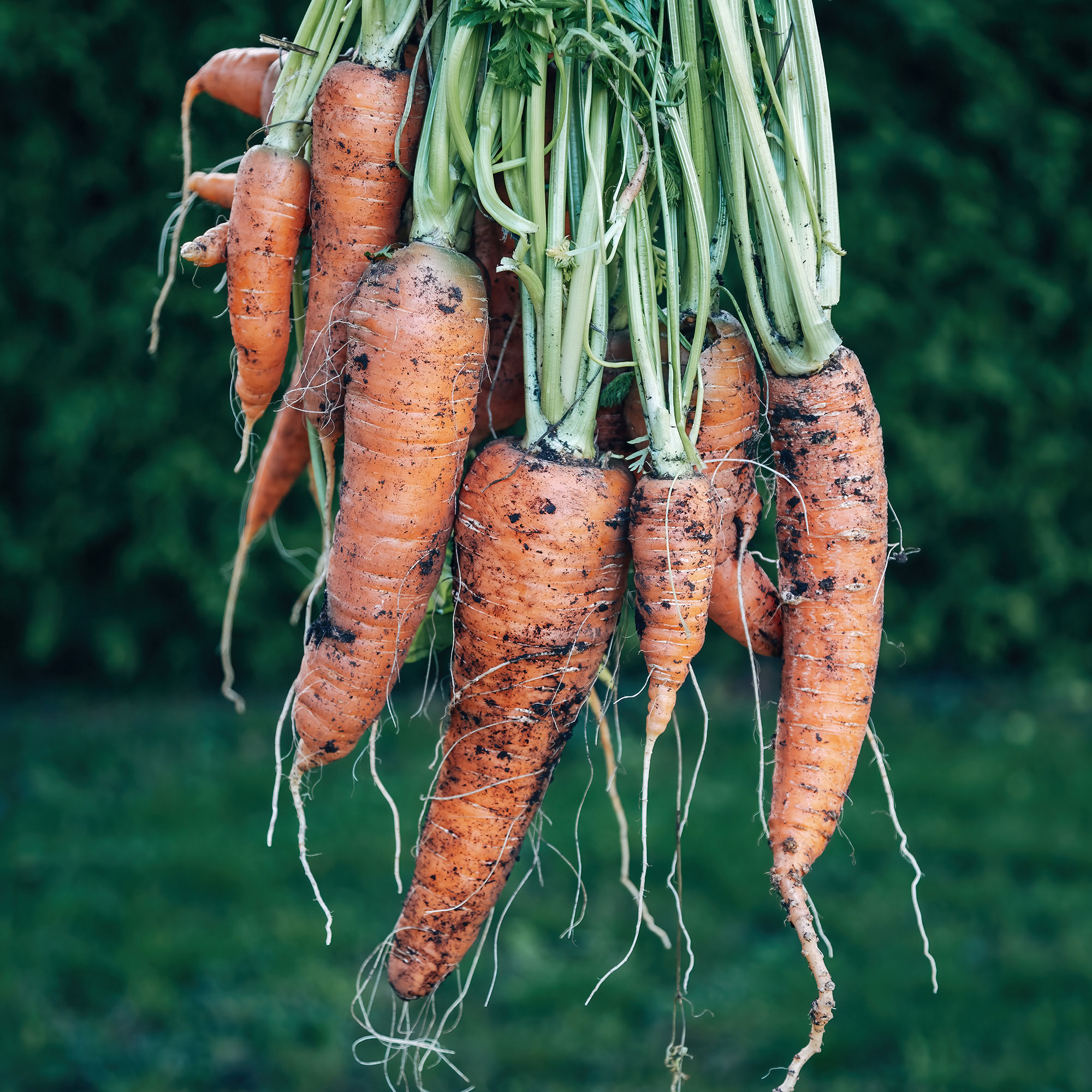
2. Shoulder test
'One of the most reliable signs I look for is the carrot's "shoulder" - the top part that's visible above the soil in your planter,' Victoria says. 'When this shoulder is about 1/2 to 1 inch in diameter, it's usually a good indication that your carrots are ready to pull.'
The shoulder of the carrot is the part that pushes up against the top layer of soil. Sometimes, this will appear above ground by itself, which is a sure sign that the carrot is ready to be harvested. If not, you can use your fingers to sweep around the base of the foliage - if you don't feel anything, leave the carrot to develop for another week or two.
1/2 to 1 inch is the ideal diameter of a carrot shoulder. If the vegetable feels about this size, it's ready for you to go ahead and pull it out of the ground.
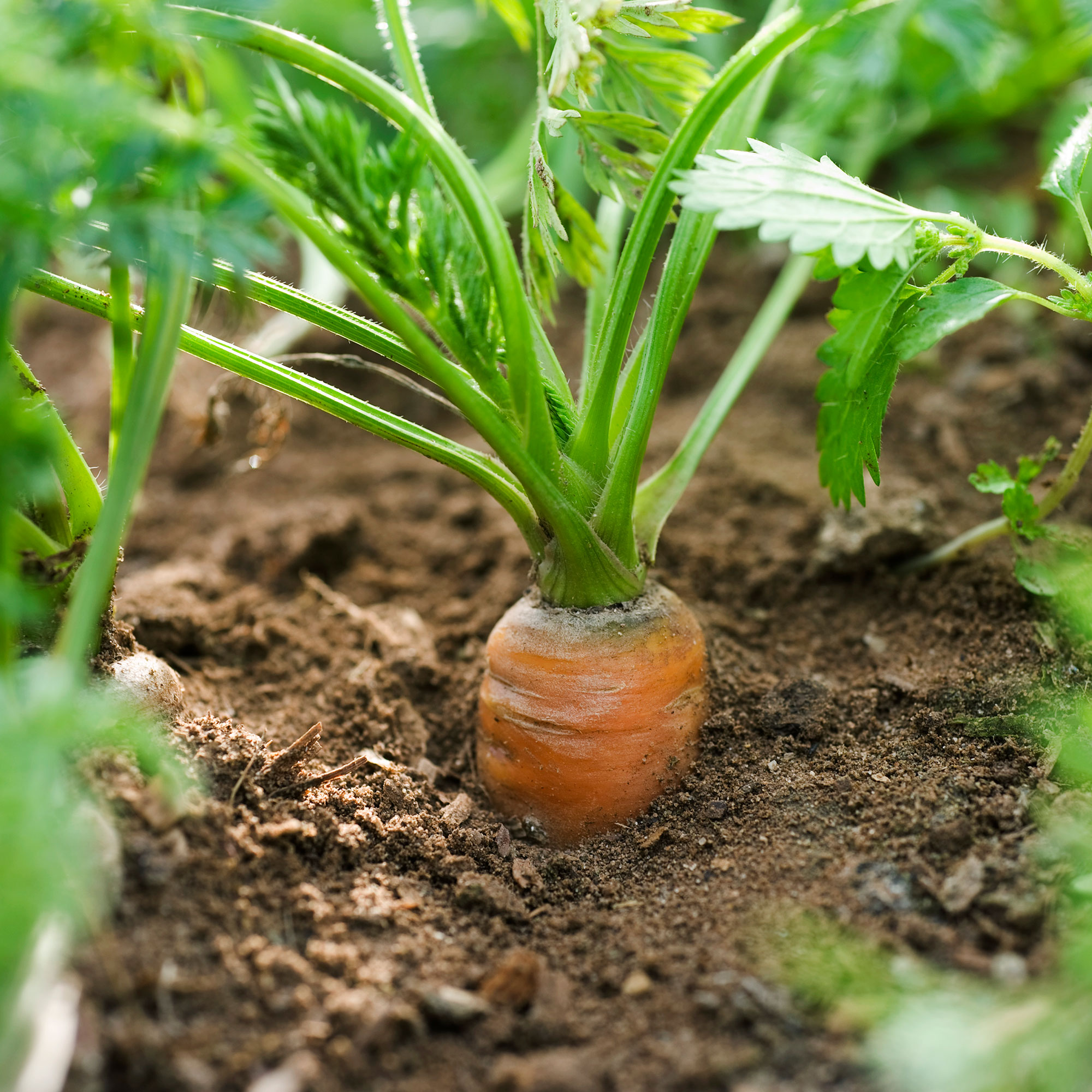
3. Foliage height and colour
'Mature carrot foliage will be lush and green with feathery, fully developed tops,' says Loren from Outdoor Fountain Pros. 'The foliage color is your best visual cue from above ground.'
As Loren points out, the colour of the leaves that are visible above ground is a helpful indicator when it comes to harvesting carrots. If the leaves are still pale green, it's recommended to leave them in the ground, so that they have more time to develop and deepen in colour. And in terms of height, the leaves are usually around 10 to 12 inches at peak harvesting time.
4. Resistance test
A good indicator of when carrots are ready to be harvested is how they respond when you pull them out of the ground. If the size of the shoulder and state of the foliage suggest the carrots are ready, you can pick a couple to check.
'Gently try pulling on the green tops of a few carrots,' Loren says. 'When mature, the tops should resist a bit but then release from the soil without much force. If the greens are very difficult to dislodge, the roots are likely still growing. If they slip right out of the ground, you may have waited too long.'
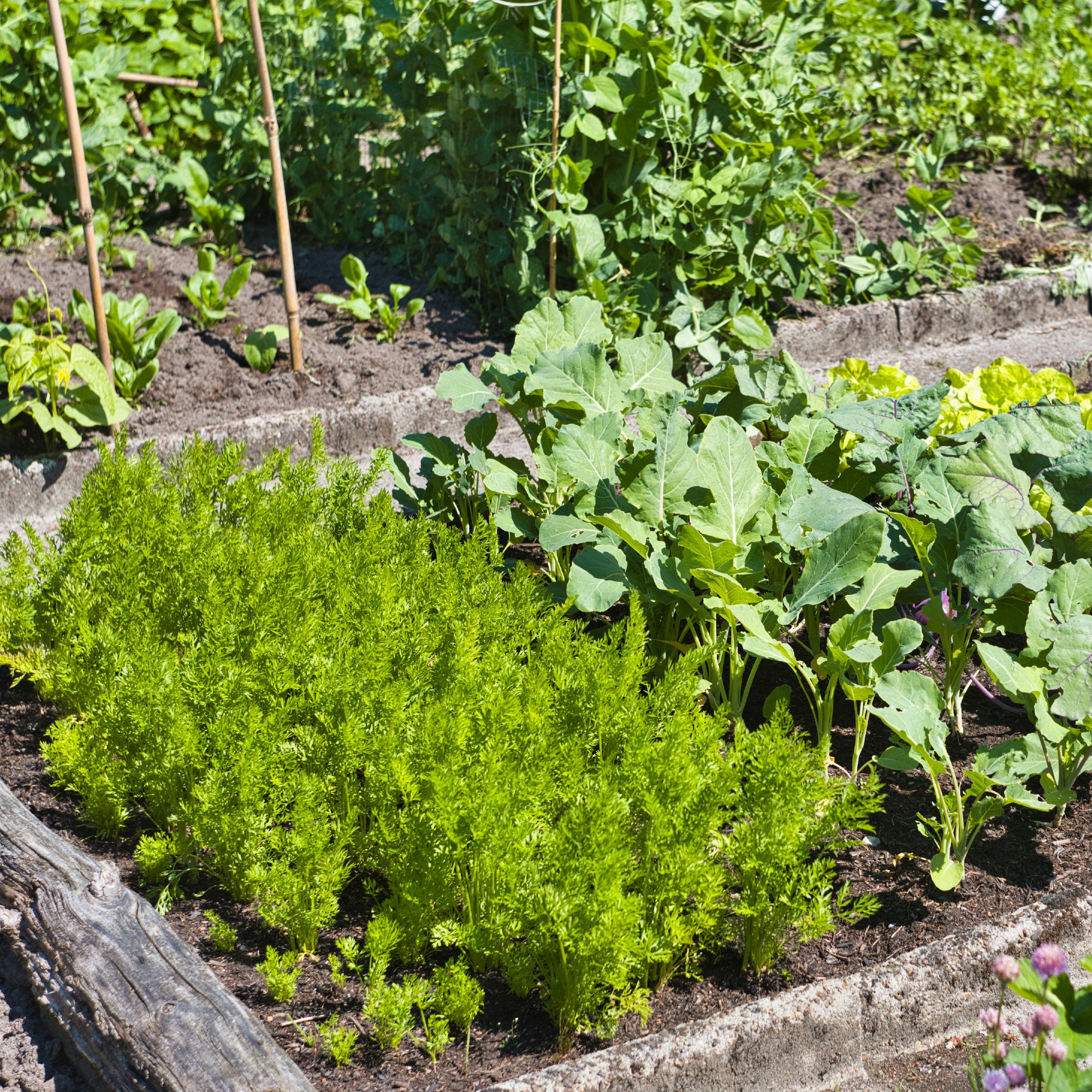
5. Seasonal and environmental factors
Being aware of seasonal and environmental influences is the final step in learning how to know when carrots are ready to harvest. Gardening expert Victoria Cummins outlines the following factors as playing a part:
- Soil and weather: 'In my experience with container gardening, carrots grown in mild climates can be harvested almost year-round. I use mulch in my planters to protect them from extreme temperatures.'
- Variety: 'Different carrot varieties have different maturation times, so always check the specific requirements for the variety you're growing in your pots.'
'Fall crops in planters can be especially sweet if you wait until after the first frost,' Victoria adds. 'I often cover my carrot pots with mulch to protect them from freezing and allow sugars to build up.'
What you'll need to harvest carrots
FAQs
What happens if you leave carrots in the ground for too long?
'If you leave carrots in the ground for too long, they can become woody, bitter or split,' gardening expert Loren Taylor says. 'Whereas if you harvest too early, carrots will be underdeveloped with less flavor. Both overgrown and immature carrots are still edible, but won't have that perfect sweet crunch.'
That's why it's crucial to get the harvesting time just right with carrots. If they aren't pulled out of the ground when they're ready, the flavour and texture isn't going to be as nice. Plus, they might grow to be too big.
How long do carrots take to grow?
'Usually, carrots are grown and ready to be harvested around twelve to sixteen weeks after the seeds were sown,' says Graham Smith MCIHort, Gardening Expert, LBS Horticulture.
The seed packet will usually indicate how long the seeds take to fully mature. 80 days, or 12 weeks, is a common length of time for carrots, but you should observe how the vegetables look to be doing too. Deep green foliage around 10 inches in length, and a shoulder with at least 1/2 inch in diameter, usually means the carrots are ready.
'Sometimes, you may also benefit from harvesting some carrots slightly earlier if they appear to be becoming overcrowded, as this will allow other carrots to grow to full size after they are thinned out.' Graham says.
Now you know the answer to how do I know when my carrots are ready to harvest, you can get the most out of this hearty root vegetable. Will you be trying any new carrot dishes this autumn?

Katie has been writing freelance since early 2022, specialising in all things homes and gardens, following achieving a Masters in Media and Journalism. She started out writing e-commerce content for several of Future’s interior titles, including Real Homes, Gardeningetc, Livingetc, and Homes and Gardens. Since then she’s been a regular contributor on Ideal Home’s digital team, covering news topics, how-to guides, and product reviews.
